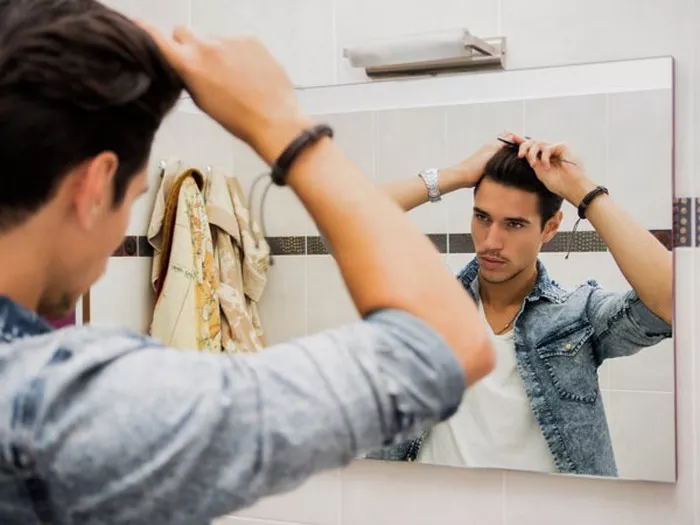Wearing a helmet is essential for protecting your head while engaging in activities like biking, motorcycling, or even certain work environments. However, frequent helmet use can lead to hair loss, a concern for many. This article will explore effective strategies to prevent hair loss while wearing a helmet, ensuring you maintain a healthy scalp and hair.
Understanding the Causes of Helmet-Induced Hair Loss
Before diving into prevention techniques, it’s important to understand how helmets can contribute to hair loss. The main culprits include:
Traction Alopecia
This type of hair loss occurs when the hair is subjected to constant pulling or tension. Helmets that fit too tightly can pull on the hair, leading to gradual hair loss.
Friction
Constant rubbing of the helmet against the scalp can cause friction, damaging the hair cuticles and leading to hair breakage and loss.
Sweat and Bacteria
Helmets trap sweat and heat, creating an ideal environment for bacteria and fungus. This can lead to scalp infections and conditions like dandruff, which can contribute to hair loss.
Lack of Airflow
Helmets restrict airflow to the scalp, leading to a buildup of sweat and oil. This can clog hair follicles and hinder healthy hair growth.
Effective Strategies to Prevent Hair Loss from Helmet Use
Choose the Right Helmet
One of the most important steps in preventing hair loss is selecting the right helmet. Consider the following tips:
Proper Fit
Ensure your helmet fits correctly—not too tight, not too loose. A well-fitting helmet should sit comfortably on your head without causing excessive pressure.
Ventilation
Choose a helmet with good ventilation. Helmets with multiple air vents help improve airflow, reducing sweat buildup and keeping your scalp cool.
Material
Opt for helmets made from lightweight and breathable materials. This can help minimize the friction and tension that contribute to hair loss.
Maintain Good Hair and Scalp Hygiene
Keeping your hair and scalp clean is crucial in preventing hair loss. Here are some hygiene tips:
Regular Washing
Wash your hair regularly with a mild shampoo to remove sweat, oil, and dirt. Avoid using harsh shampoos as they can strip your hair of its natural oils, leading to dryness and breakage.
Conditioning
Use a good quality conditioner to keep your hair hydrated and reduce friction between your hair and the helmet. Conditioner helps to keep the hair cuticles smooth, preventing breakage.
Scalp Exfoliation
Exfoliating your scalp once a week can help remove dead skin cells and prevent clogged hair follicles. Use a gentle scalp scrub or a soft-bristled brush for this purpose.
Protect Your Hair
Taking extra precautions to protect your hair can go a long way in preventing hair loss. Consider the following methods:
Hair Cap or Liner
Wearing a thin, breathable hair cap or liner under your helmet can reduce friction and absorb sweat. This provides a protective barrier between your hair and the helmet.
Hairstyle
Avoid hairstyles that pull your hair tight, such as ponytails or buns, as they can cause traction alopecia. Instead, opt for looser styles or wear your hair down.
Hair Products
Use hair products that provide additional protection, such as leave-in conditioners or serums. These products can help reduce friction and keep your hair moisturized.
Post-Ride Care
After removing your helmet, take the time to care for your hair and scalp. Here are some tips for post-ride care:
Air Dry
Allow your hair to air dry instead of using heat styling tools. Heat can damage your hair and exacerbate hair loss.
Gentle Combing
Use a wide-toothed comb to gently detangle your hair. Avoid brushing wet hair as it is more prone to breakage.
Scalp Massage
Massaging your scalp can improve blood circulation, promoting healthy hair growth. Use your fingertips to gently massage your scalp in circular motions.
See Also: How to Prevent Hair Loss During Weight Loss?
Healthy Lifestyle Choices
A healthy lifestyle can significantly impact the health of your hair. Consider the following tips:
Balanced Diet
Eat a balanced diet rich in vitamins and minerals that support hair health. Foods high in protein, iron, zinc, and vitamins A, C, and E are particularly beneficial.
Hydration
Drink plenty of water to keep your hair and scalp hydrated. Dehydration can lead to dry, brittle hair that is more prone to breakage.
Stress Management
High stress levels can contribute to hair loss. Practice stress management techniques such as yoga, meditation, or deep breathing exercises to keep stress in check.
Consult a Professional
If you are experiencing significant hair loss despite taking preventive measures, it may be time to consult a professional. A dermatologist or trichologist can help diagnose any underlying conditions and recommend appropriate treatments.
Medical Treatments
In some cases, medical treatments such as minoxidil or finasteride may be prescribed to promote hair growth and prevent further loss.
Hair Transplants
For severe hair loss, hair transplant surgery may be an option. This involves transplanting hair follicles from one part of your body to the balding areas.
Conclusion
Preventing hair loss while wearing a helmet involves a combination of proper helmet selection, good hair and scalp hygiene, protective measures, and a healthy lifestyle. By following the strategies outlined in this article, you can enjoy the benefits of helmet use without compromising the health of your hair. Remember, if hair loss persists, consulting a professional can provide further guidance and treatment options.


